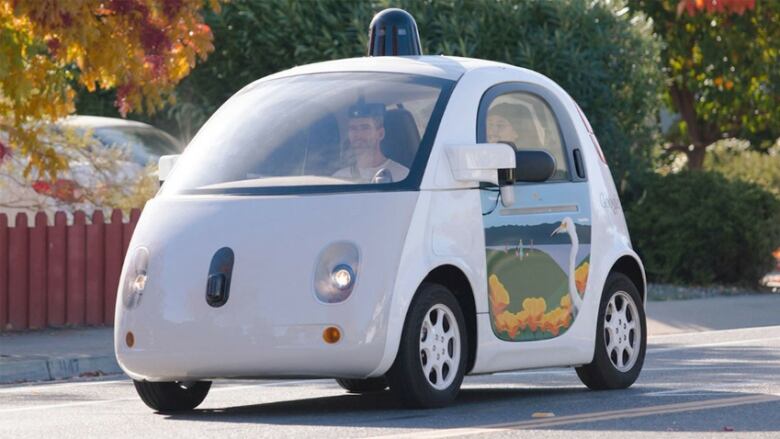As risky as it sounds, a hands-off approach to driverless vehicle safety may save lives
Proving the technology is safe could take hundreds of years while many say it will save lives now

The latest U.S. government guidelines hand a lot of the responsibility for the safety of autonomous vehicles over to the companies that make them, but a Canadian expert says that may be the best option, and ultimately the decision will save thousands of lives.
"We're [in between] a rock and a hard place." says Paul Godsmark of the Canadian Automated Vehicles Centre of Excellence (CAVCOE), which provides consulting services, analysis and recommendations to government, public sector agenciesand private industry on automated vehicle deployment.
"It's really a fascinating problem."
Look, Ma, no regulations
The Trump administration this week issued updated safety guidelines for self-driving cars that take an even more hands-off approach than those issued by the Obama administration, which were already largely voluntary.
"The language is very much written in a way to make it seem like nothing that they are putting in there is an actual regulation. It's kind of like vague guidelines." says Mike Ramsey, research director with Gartner, a technology research firm.
"I think what you're seeing is the Trump administration is very eager to show that they're pulling back regulation, making it easier for companies to get things accomplished, removing barriers and roadblocks," he said.
Called Automated Driving Systems 2.0 A Vision for Safety, the new guidelines include a 12-point safety checklist, and make stipulations such as autonomous vehicle systems are expected to be able to detect and respond to objects both directly in front of them and nearby "including pedestrians, bicyclists, animalsand objects that could affect safe operation of the vehicle."
Companies are also encouraged to install systems that make drivers pay attention to the road even when vehicles are operating autonomously.
Godsmark says it's clear the new guidelines are letting companies take the wheel. "What they're doing is they're giving license to developers to try an untested technology on an unsuspecting public," says Godsmark.
As frightening as that may sound, he says it may be the best decision.
For one thing, it wouldn't be practical to safety-test autonomous vehicles in a lab or controlled environment for the length of time needed to reach a statisticallly acceptable safety standard.
"We would need to have several billion miles of testingwhich ... I think some people have calculated would take several hundred years," he says.
Some studies have shown driverless cars could reduce the number of traffic fatalities by up to 90 per cent by removing driver error, speeding and otherunsafe human practices.
The current human system, Godsmark says, is killing about 40,000 people a year in the U.S. around 2,000 per year in Canada and injuring many, many more.
Safer than human drivers
The question is, would unleashing an imperfect automated technology kill or injure fewer people than the current human-controlled driving system?
Godsmark says yes, even if that means having to place an immense amount of trust in private industry.
"We know that in the past when you trust tech companies and the automakers, they can take liberties." he says.
But Godsmarkand other supporters of the U.S. approach believe the developers are determined to make the cars safe because their business survival depends on it.
"So they are very motivated to get it right," Godsmark said.
Leaving it up to the market to keep us safe
Others question whether a pure market approach is the best way go.
"Not all regulation is bad. The regulation exists to protect us," says Ramsey.
"There's an amount of regulation that has to go in because we're not talking about just putting in an automatic braking system," he says.
"So in one sense, yes, a lot of lives could be saved [by autonomous vehicles], but in another sense, you don't want to rush something like this," he said. "I mean, you're talking about completely taking the human out of the driving loop. So it's a big decision. It's a big thing."
Driverless cars will be on the roads sooner than you think
The U.S. is well ahead of the curve on automated vehicles compared to much of the rest of the world, moving forward with actual deployment.Other countries, including Canada, are still in the testing phase.
The entire automated vehicle segment is moving much more quickly than many people may realize, Godsmark says.
"The lead developers, the ones that I am monitoring, they are making great strides," he says. "And my expectation is that we will have some form of autonomous vehicle operating on public roads in the next two years in North America."












_(720p).jpg)


 OFFICIAL HD MUSIC VIDEO.jpg)
.jpg)



























































































